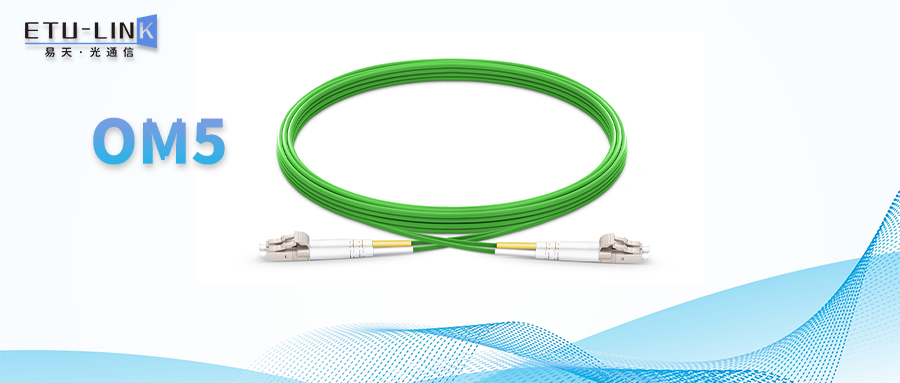
What is OM5 fiber patch cord? Where can it be used?
What is OM5 fiber patch cord? Where can it be used?
As we know that OM3 and OM4 multimode fibers are mainly used to connect optical modules in the 850nm band. However, with the continuous improvement of the transmission rate of optical modules, since the parallel transmission technology uses multiple single-channel parallel transmissions, more dense fiber cabling is required, management and maintenance costs will rise sharply.
Therefore, the single-mode wavelength division multiplexing technology is introduced into the multi-mode transmission system. If multiple wavelengths can be transmitted in one optical fiber, the required number of optical fibers and maintenance costs will be greatly reduced. Because of this, OM5 fiber was born in this context. Next, ETU-LINK will explain to you what is OM5 multimode fiber and where can it be used?
What is OM5 Multimode Fiber?
Compared with OM4, OM5 multimode fiber mainly widens the high-bandwidth channel, allowing it to support transmission in the 850nm-950nm band. Due to the widened bandwidth channel, multi-mode wavelength division technology can be applied, and because of this, OM5 can reduce the number of multi-mode fiber cabling and maintenance costs in the data center.

Where can OM5 multimode fiber be applied?
At present, OM5 multimode fibers are mainly used in SWDM4 short-wavelength wavelength division multiplexing optical modules and SR4.2 two-wavelength division multiplexing optical modules. SWDM4 is a wavelength division multiplexing of 4 short wavelengths, which are 850nm, 880nm, 910nm and 940nm. The optical modules using this technology include 40G QSFP+ SWDM4 and 100G QSFP28 SWDM4. Among them, 100G QSFP28 SWDM4 can support 4 wavelength channels in the range of 850nm-950nm to transmit on one fiber, which saves 75% of the fiber consumption compared with the 100G SR4 solution, and the cost saving and cabling simplification effect are more significant.
SR4.2 two-wavelength division multiplexing is mainly used for single-fiber bidirectional technology, mainly represented by 400G-SR4.2 optical modules and 100G BiDi. Among them, 400G SR4.2 uses two different wavelengths to realize the function of Bidi. Therefore, 400G SR4.2 saves half the cost of multimode fiber, reduces the wiring cost of digital communication customers, and thus reduces expenses. The 100G BiDi optical module uses single-fiber bidirectional and four-level pulse amplitude modulation (PAM4) technology, with a single-channel rate of 50Gbps, and transmits signals in the 850nm and 910nm windows simultaneously in one fiber, thereby realizing a pair of fibers bidirectionally transmit 100 Gbps. Quantity capacity, can save 50% of fiber consumption.
The above is the OM5 fiber and application introduced by ETU-LINK. With the continuous increase of application demand, multimode fiber is developing in the direction of low bending loss, high bandwidth, and multi-wavelength multiplexing. Among them, The most potential application is OM5 fiber, which has the best performance of current multimode fiber and provides a powerful fiber solution for future 100Gb/s and 400Gb/s multi-wavelength systems.
Categories
New Blog
Tags
© Copyright: 2025 ETU-Link Technology CO ., LTD All Rights Reserved.

IPv6 network supported
Friendly Links:
易天官网